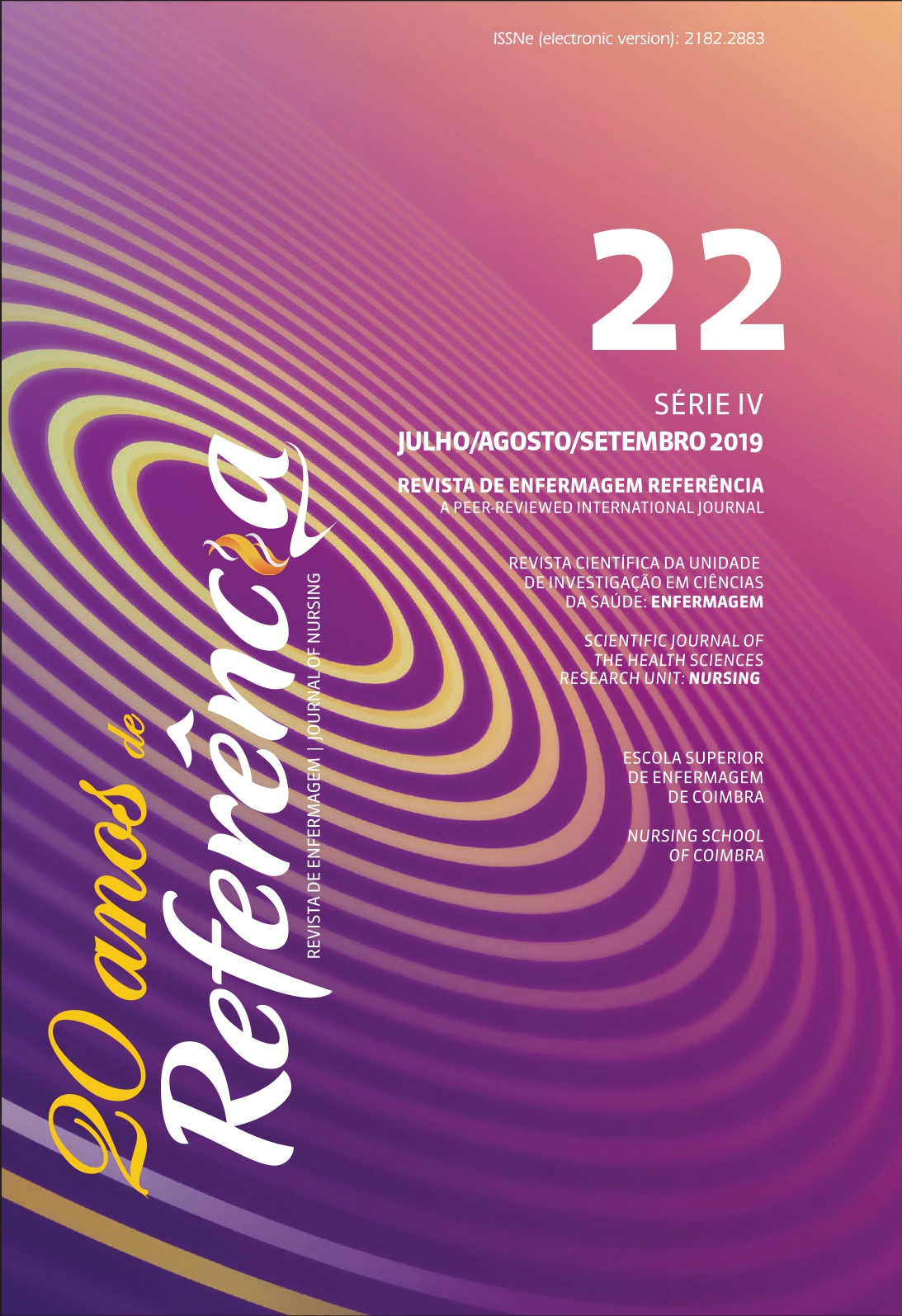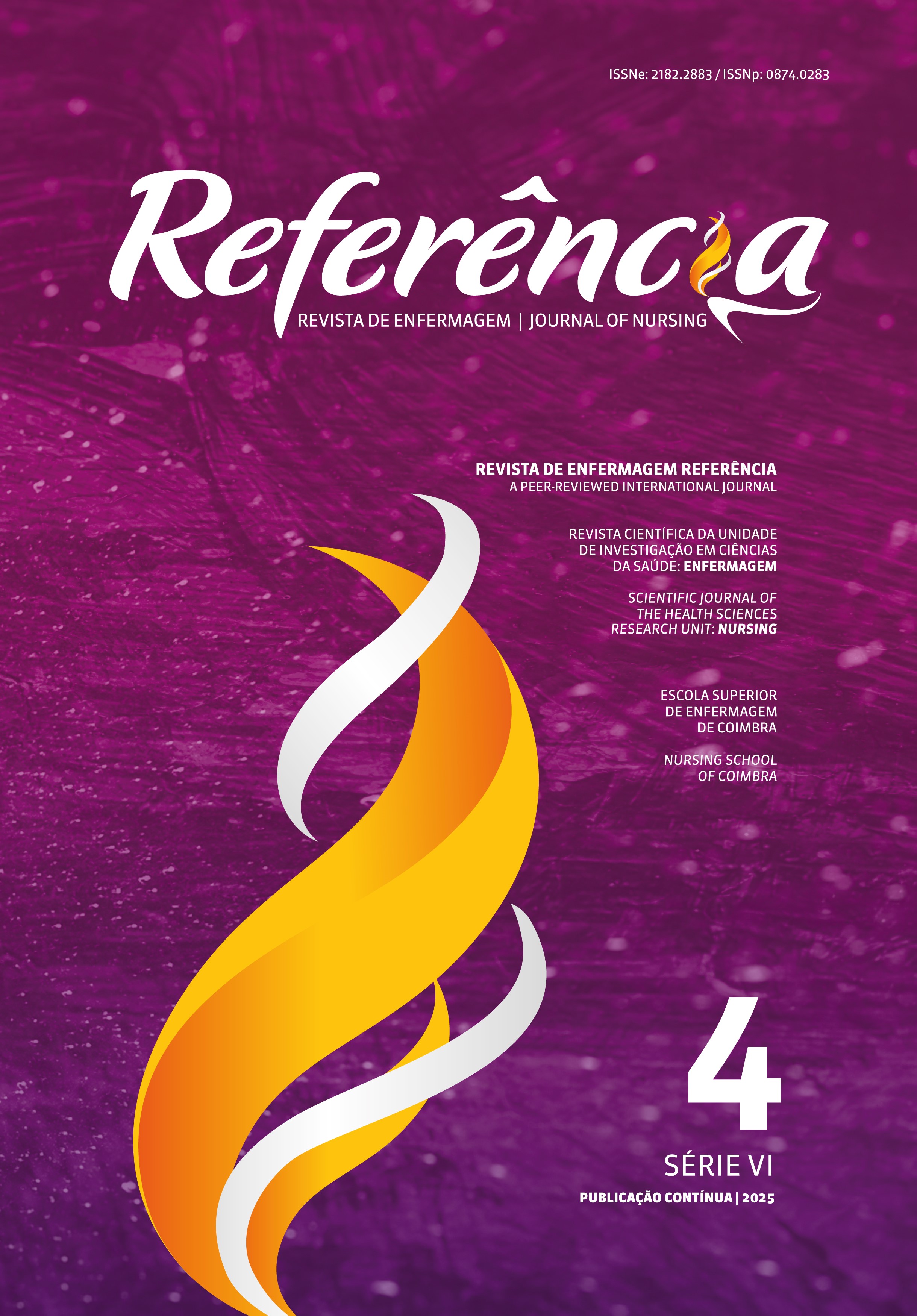Psychometric study of the Nursing Care Scale for Pain Management
DOI:
https://doi.org/10.12707/RIV19039Keywords:
pain, pain management, nursing care, psychometricsAbstract
Background: Pain is inefficiently managed by nurses in part due to the lack of tools capable of measuring and monitoring such practice.
Objective: To assess the psychometric properties of the Nursing Care Scale for Pain Management.
Methodology: This descriptive correlational study assessed internal consistency using Cronbach’s alpha coefficient and confirmatory factor analysis using the covariance matrix - maximum likelihood algorithm.
Results: The study involved 260 nurses with a mean age of 35.42 years, 78.5% of whom were women. After the refinement of the scale, the overall internal consistency was α = 0.95, and the score by factors was: initial assessment α = 0.85; Planning α = 0.76; Implementation of non-pharmacological interventions α = 0.80; Educating the person with pain α = 0.89; Registration α = 0.76; Reassessment α = 0.81, and Implementation of pharmacological interventions α = 0.70. The highest mean values of the overall scores are related to pharmacological interventions (3.13 ± 0.60).
Conclusion: The scale is a reliable and valid tool for assessing the pain management practices of Portuguese nurses. Most nurses apply pharmacological interventions to manage the pain endured by patients.
Downloads
References
Andersson, V., Bergman, S., Henoch, I., Ene Kerstin, W., Otterström-Rydberg, E., Simonsson, H., & Ahlberg, K. (2017). Pain and pain management in hospitalized patients before and after an intervention. Scandinavian Journal of Pain, 15(1), 22-29. doi:10.1016/j.sjpain.2016.11.006
António, C. A. (2017). Gestão da dor no serviço de urgência: Práticas dos enfermeiros (Dissertação de mestrado). Escola Superior de Enfermagem de Coimbra, Portugal. Recuperado de http://web.esenfc.pt/?url=MB7fbUHQ
Araujo, L. C., & Romero, B. (2015). Pain: Evaluation of the fifth vital sign: A theoretical reflection. Revista Dor, 16(4), 291-296. doi:10.5935/1806-0013.20150060
Barr, J., Fraser, G. L., Puntillo, K., Ely, E. W., Gelinas, C., Dasta, J. F., . . . Jaeschke, R. (2013). Clinical practice guidelines for the management of pain, agitation, and delirium in adult patients in the intensive care unit. Critical Care Medicine, 41(1), 263-306. doi:10.1097/CCM.0b013e3182783b72
Becker, W. C., Dorflinger, L., Edmond, S. N., Islam, L., Heapy, A. A., & Fraenkel, L. (2017). Barriers and facilitators to use of non-pharmacological treatments in chronic pain. BMC Family Practice, 18(1), 41. doi:10.1186/s12875-017-0608-2
Byrne, B. M. (2000). Structural equation modeling with AMOS: Basic concepts, applications, and programing. Mahwah, NJ: Lawrence Erlbaum Associates.
Cunha, M., Duarte, J., Cardoso, A., Ramos, A., Quintais, D., Monteiro, R., . . . Almeida, V. (2018). Inventário habilidades do cuidador: Estrutura fatorial numa amostra de participantes portugueses. Millenium, 2(6), 41-55. doi:10.29352/mill0206.04.00164
Dequeker, S., Van Lancker, A., & Van Hecke, A. (2018). Hospitalized patients’ vs. nurses’ assessments of pain intensity and barriers to pain management. Journal of Advanced Nursing, 74(1), 160-171. doi:10.1111/jan.13395
Drake, G., & Williams, A. C. (2017). Nursing education interventions for managing acute pain in hospital settings: A systematic review of clinical outcomes and teaching methods. Pain Management Nursing, 18(1), 3-15. doi:10.1016/j.pmn.2016.11.001
Gan, T. J., Epstein, R. S., Leone-Perkins, M. L., Salimi, T., Iqbal, S. U., & Whang, P. G. (2018). Practice patterns and treatment challenges in acute postoperative pain management: A survey of practicing physicians. Pain and Therapy, 7(2), 205-216. doi:10.1007/s40122-018-0106-9
Glowacki, D. (2015). Effective pain management and improvements in patients’ outcomes and satisfaction. Critical Care Nurse, 35(3), 33-41. doi:10.4037/ccn2015440
Hair, J., Black, W. C., Babin, B., Anderson, R. E., & Tatham, R. (2005). Multivariate data analyses (6th ed.). New York, NY: Prentice-Hall.
Hong, S.-J., & Lee, E. (2014). Effect of evidence-based postoperative pain guidelines via web for patients undergoing abdominal surgery in South Korea. Asian Nursing Research, 8(2), 135-142. doi:10.1016/j.anr.2014.05.005
Kizza, I. B., Muliira, J. K., Kohi, T. W., & Nabirye, R. C. (2016). Nurses’ knowledge of the principles of acute pain assessment in critically ill adult patients who are able to self-report. International Journal of Africa Nursing Sciences, 4, 20-27. doi:10.1016/j.ijans.2016.02.001
Kline, R. B. (2005). Principles and practice of structural equation modeling. New York, NY: The Guilford Press.
Larner, D. (2014). Chronic pain transition: A concept analysis. Pain Management Nursing, 15(3), 707-717. doi:10.1016/j.pmn.2013.04.003
Marôco, J. (2014). Análise estatística com o SPSS statistics. Pero Pinheiro, Portugal: Report Number.
Medrzycka-Dabrowka, W., Dąbrowski, S., Gutysz-Wojnicka, A., Gawroska-Krzemińska, A., & Ozga, D. (2017). Barriers perceived by nurses in the optimal treatment of postoperative pain. Open Medicine, 12, 239-246. doi:10.1515/med-2017-0037
Pretorius, A., Searle, J., & Marshall, B. (2015). Barriers and enablers to emergency department nurses’ management of patients’ pain. Pain Management Nursing, 16(3), 372-379. doi:10.1016/j.pmn.2014.08.015
Ribeiro, A. L.. (2013). A pessoa com dor crónica: Um modelo de acompanhamento de enfermagem (Dissertação de mestrado), Universidade Católica do Porto, Portugal. Recuperado de http://hdl.handle.net/10400.14/20108






















